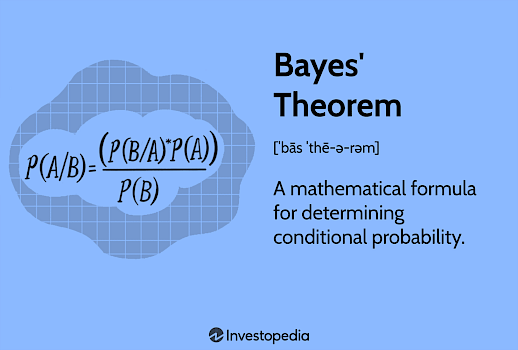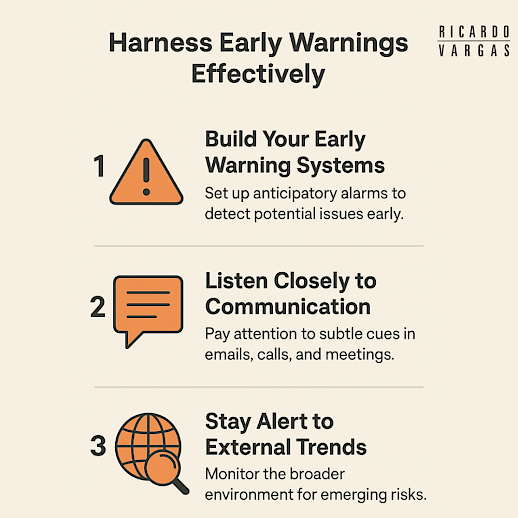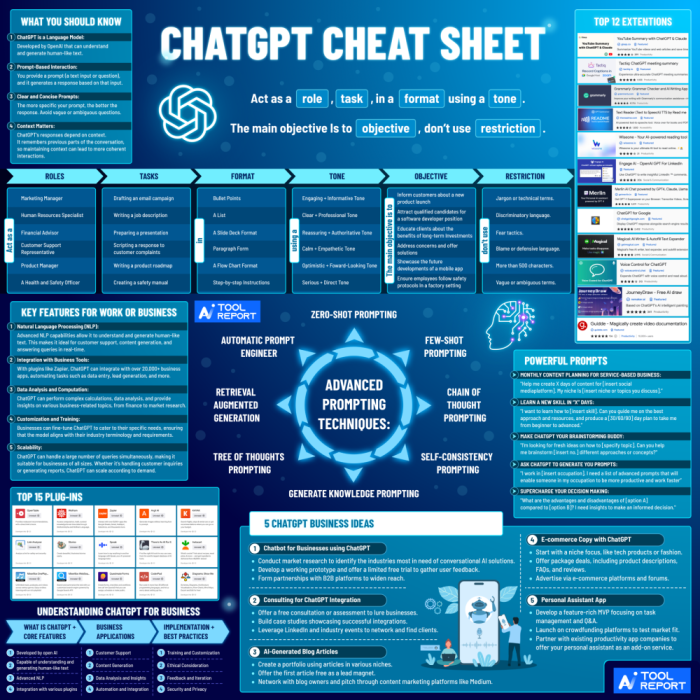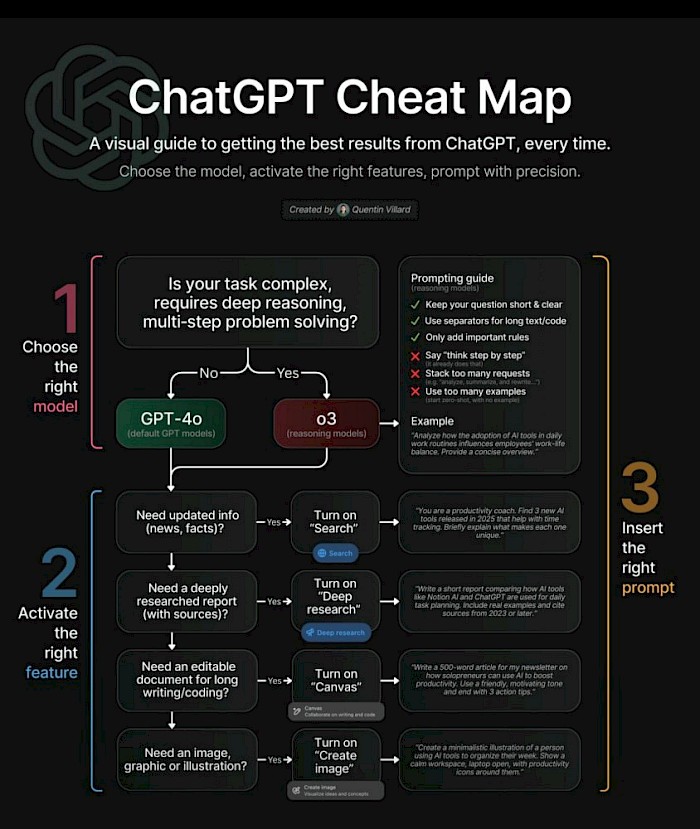Issue #21 - Ignorar os Alertas Precoces é a Maneira mais Rápida de Fracassar Silenciosamente
Olá pessoal
Estou de volta com a edição deste mês do nosso boletim informativo — e, desta vez, estamos focando em uma das ameaças mais negligenciadas no gerenciamento de projetos: os alertas antecipados.
Nesta edição, exploro por que ignorar sinais sutis pode silenciosamente inviabilizar até mesmo os projetos mais bem executados — e como desenvolver sistemas de alerta antecipado pode ser sua maior vantagem competitiva. Também analisaremos um poderoso estudo de caso em IA para a área da saúde, apresentaremos melhores maneiras de ativar ferramentas como o ChatGPT e refletiremos sobre o que significa quando as máquinas superam não apenas os trabalhadores... mas também os especialistas.
Além disso, algumas ótimas notícias para compartilhar:
- Meu novo curso sobre Valor Agregado está no ar — e profundamente prático.
- Nossa pesquisa sobre IA em Gerenciamento de Projetos será encerrada em breve — não perca a chance de contribuir.
- Temos algumas vagas disponíveis para a Masterclass de Gerenciamento de Projetos com IA deste mês — junte-se a nós se estiver pronto para subir de nível.
Muita coisa está acontecendo. Mas, como sempre, o objetivo continua o mesmo: liderar melhor, antecipar mais e criar projetos que não apenas terminem — que façam a diferença.
Vamos lá.
Ricardo

In This Issue
- Why Ignoring Early Warnings Could Be the Biggest Risk Your Project Faces
- AI in Healthcare: A Moment Worth Reflecting Upon
- Prompting Isn’t Just About Asking, It’s About Asking Well
- A few seats left: AI-Driven Project Management Masterclass
- New Office Hours coming soon
- New Course is out: Earned Value
- Last chance to join our global research on AI in project management
Why Ignoring Early Warnings Could Be the Biggest Risk Your Project Faces
For centuries, predicting the future has been surrounded by myths and superstitions. Like crystal balls and fortune-tellers.
People have always wanted to understand what lies ahead and get a head start on events, either to seize opportunities or avoid risks.
But if you don’t believe in mysticism or magic, the only reliable way to “predict the future” is by working with probabilities, statistics, and anticipation. This means learning how to interpret the signals that come your way and, based on them, update your expectations of what might happen.
Today, I want to share with you a simple but powerful idea:
What if the real difference between a failed project and a successful one isn’t how we respond when things go wrong — but what we notice before they do?
Sounds obvious, but it’s rarely treated that way.
We tend to react to problems instead of anticipating them.
The truth is, most disruptions and challenges in projects don’t happen overnight. They give signals first. These signals are what I call early warnings.
If we can detect these signals early, we dramatically increase the chances of steering our project back on course or even avoiding trouble altogether.
Very few disruptions or problems happen suddenly, without warning. Most of the time, signals that trouble is coming appear much earlier than the trouble itself.
Detecting these early warnings means we can act before the situation worsens.
Imagine receiving a phone call from a critical supplier inquiring about the project schedule and whether there are any delays. This simple phone calls can be a early warning that the supplier may be facing challenges in delivering a product or service and wants to understand if their delay will impact your project or if you are already late, and their delay would be less critical or problematic.
Or maybe your project sponsor, who has always been supportive, suddenly disappears. You can’t reach them, they don’t answer calls or emails. That change in behavior is a clear sign that something is shifting — maybe priorities, interest, or, most importantly, the support for your project.
These small signals, when combined, allow you to anticipate a trend before it becomes a problem.

Figure 1 — Bayes Theorem from Investopedia
I know many people dislike statistics, but Bayes’ Theorem is fundamental to understanding early warnings.
Developed by Reverend Thomas Bayes more than 250 years ago, it states that as new information arrives, you must update your probability estimates. If you want to refresh your understanding of Bayes’ theorem, check out this great YouTube video.
Every new piece of information forces us to recalculate our odds.
That’s exactly what you do with early warnings in projects: when new signals come, you update your risk assessment and decision-making.
For example, what is the chance of seeing an elephant walking down your street right now? Very low, right? Now, if I tell you there’s a circus with elephants nearby, that probability increases. And if an elephant has escaped from that circus, it increases even more.
In projects, every new piece of information changes the likelihood of risks materializing. That’s the essence of Bayes’ Theorem and the center of the concept of early warnings.
Interestingly, this concept is also a foundation of many artificial intelligence systems that continually adjust their predictions as new data becomes available.
Remember, just like you don’t wait for a fire to buy a smoke detector, we don’t wait for a disaster in our project to create mechanisms of early warnings.
Your buglar alarm ringing doesn’t necessarily mean your house has already been robbed. It signals that something suspicious is happening. Even if no theft occurs, the alarm raises your attention to act.
It’s the same with projects:
An early warning doesn’t mean the problem has already arrived, but that the probability of it happening has increased.
Communication is where most early warnings show up. Changes in tone in emails, delayed responses, less productive meetings, unexpected phone calls — all these are signals that deserve your full attention.
Be vigilant.
An uncharacteristically short email, a skipped meeting, or a vague report might be your first clue that something is amiss. Early warnings live in these small, easily overlooked changes.
Early warnings don’t always come from your project itself. Sometimes the world around you changes, and you need to be alert.
So, what can you do to harness early warnings effectively?
1. Build Your Early Warning Systems
Create mechanisms to catch these subtle signs early — whether it’s tracking communication patterns, flagging unexpected enquiries, or monitoring shifts in project timelines and resource availability.
2. Listen Closely to Communication
Pay attention to changes in tone, frequency, and content of meetings, emails, and informal chats. Sometimes the most valuable early warnings come disguised in everyday conversations.
3. Stay Alert to External Trends
Your project doesn’t exist in a vacuum. Events outside your immediate scope — market shifts, geopolitical changes, or technology breakthroughs — can be early warnings of disruption.

Figure 1 — Early Warnings
For example, I subscribe to almost 20 newsletters about artificial intelligence — like Superhuman, Barsee, AI Report, Every, 1440, among others — and I use Notebook LM to scan these newsletters and highlight signals that might affect my projects.
Recently, Microsoft launched an AI for medical diagnosis that outperforms human doctors. I even made a post about it on my Linkedin:
But why would someone like me working in the project management field publish news about AI in medical diagnosis?
The answer is simple: this is a clear example of a early warning for project managers: If AI can already outperform doctors, why wouldn’t it be able to outperform project managers?
This was the central topic of my recent webinar with Antonio Nieto-Rodriguez , where we discussed how AI might dramatically change project leadership.
Your competitive advantage lies in seeing what others do not: the early warnings that can save your project. The future of project success is not about working harder or faster. It’s about seeing further and earlier.
Problems don’t emerge suddenly… they announce themselves in subtle ways. The question is: Are we paying attention?
Stay alert. Stay proactive. Transform the way you anticipate change.
This is your project’s true competitive advantage.
This isn’t just risk management. This is early warning mastery.
What Has Been on My Radar Recently?
AI in Healthcare: A Moment Worth Reflecting On
This really, really amazed me and I think that it’s worth a moment of reflection.
As you know, I recently came across an article in the Financial Times that’s stayed with me.
Microsoft has announced a new AI diagnostic tool that it claims can outperform doctors — not just assist them, but outperform them — in diagnosing complex conditions.
This is the first major step from Microsoft’s new AI health division, led by Mustafa Suleyman, co-founder of DeepMind. And while it’s an incredible technical achievement, it also raises some difficult, necessary questions.
What happens when AI doesn’t just support decision-making in life-or-death scenarios — but leads it?
Where do we draw the line between acceleration and responsibility?
And are we, as professionals, leaders, and human beings, ready for what that shift could mean?
It’s exciting. It’s uncomfortable.
And I think it deserves more of our attention — not just as consumers of AI, but as people helping to shape how it gets built and used.
If you’re interested, here’s the article that sparked this reflection.
Prompting Isn’t Just About Asking, It’s About Asking Well
During this last month, I came across two excellent visuals that really stuck with me — both centered around how we use tools like ChatGPT.

The first is a “ChatGPT Cheat Sheet” from The AI Report, which goes far beyond basic prompt lists. It breaks down how the structure of your prompt — including your tone, role, objective, and constraints — can dramatically change the results you get.

The second is a simple but powerful “ChatGPT Cheat Map” from Quentin Villard, showing how most people use AI as if it were just one tool — when it’s really a system made of choices. Choosing the right model (GPT-4o for creative work, o3 for logic-heavy tasks), the right feature (search, deep research, canvas, image creation), and the right prompt style can make all the difference.
Even for those of us using AI every day, these were great reminders: We’re not just learning how to use these systems — we’re learning how to talk to them. And how we talk changes what they give back to us.
I hope you find them as useful as I did — and if you’ve developed your own prompting strategies, I’d love to hear them.
We’re all still figuring this out together.
Quick Announcements
A few seats left: AI-Driven Project Management Masterclass
Just a quick note to let you know that we still have some seats open for this month’s edition of the AI-Driven Project Management Revolution Masterclass, happening on July 29 and 30, 2025, from 9:00 AM to 1:00 PM ET (14:00 to 18:00 WET).
If you’ve been thinking about joining, now’s a great time.
The masterclass is designed to help you build a real, practical understanding of how AI is shaping project management — not just in theory, but in the day-to-day work of teams and organizations around the world.
We’ll explore how to apply AI in projects through a structured framework, real case studies, and honest conversations about the challenges — from privacy and ethics to cybersecurity and changing roles.
We’re also offering a special discount until July 19:
- Masterclass only: $399 USD
- Masterclass + Certification (includes prep materials + exam): $650 USD
Prices do not include VAT.
If it feels like the right moment for you, you can learn more or sign up here.
New Course is out: Earned Value
This one is close to my heart.
I’ve just launched a new course on Earned Value Management, one of the most powerful (yet often misunderstood) tools in project management. It's a topic I care deeply about — it’s the focus of my master’s thesis and much of my real-world work with infrastructure and construction teams.
In the course, I try to take a very hands-on and honest approach.
You’ll learn how to apply EVMS using tools like Microsoft Project and Monte Carlo simulations, how to forecast more accurately, and how to make smarter decisions based on the right indicators — whether you're working with predictive, agile, or hybrid approaches.
The course is in English, with subtitles in Portuguese, Spanish, French, Arabic, and Simplified Chinese.
We’re offering a special discount for a little while:
- Full course: $99 now $49.50
- Bundle with PMBOK 7th Edition: $338 now $198
- Bundle with PMBOK 6th Edition: $198 now $119 Use the code EVMS at checkout.
You can check it out here.
There are also four free classes on my YouTube channel if you’d like to get a taste before signing up:
And just a quick thank you — most of the revenue from the school goes toward scholarships for those who need it.
We've awarded over 180 scholarships in 41 countries so far.
That only happens because of the support of this community, so I’m very grateful.
Last chance to join our global research on AI in project management
One last thing: our global research survey on AI in project management is closing soon. If you haven’t participated yet, I’d be truly grateful if you could spare three minutes to share your experience. We received more than 750 replies so far!
Antonio Nieto-Rodriguez and I launched a global research initiative: AI-Driven Project Management Revolution 2025 — What’s Changed | What’s Next | What’s at Stake.
This is a free and open survey for project professionals everywhere — across industries, roles, and regions — whether you're already using AI tools or just starting to explore their impact.
The goal is to understand how AI is transforming project management in the real world — and what it means for your career, your team, and the future of the profession.
All results will be shared openly, and everyone who completes the survey can enter a draw for two free seats in this month’s masterclass.
Take the survey here. It takes only 3 minutes!
Thanks in advance. And thank you, as always, for your time, energy, and thoughtful presence in this community.
Your Voice Matters!
You can also read the previous issues here.
If you have any suggestions, comments, or anything else that will help me make it better, please send a note to [email protected]
Please feel free to share this newsletter with your friends, colleagues, and other people you may find will benefit from it.
They can also subscribe to receive it here.
Thanks for your support, and I hope it was helpful to you.
Cheers,
Ricardo Vargas





